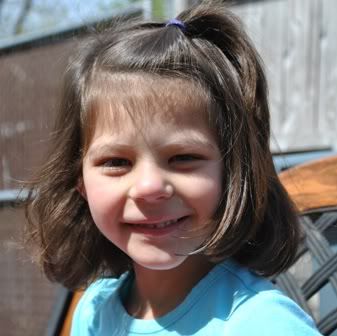An article was published on sfari.org about the importance of doing genetic testing within the autism community. Shank3 mutations are being linked to autism spectrum disorders!
http://sfari.org/news-and-opinion/in-brief/genetics-more-shank3-mutations-in-mild-autism-cases?utm_source=Master+List+-+Weekly+Newsletter&utm_campaign=af3178cf56-SFARI_Newsletter_120925&utm_medium=email
Tuesday, October 30, 2012
Monday, October 29, 2012
P-MS In The News - BIOCENTURY TV
A big thank you to Megan O'Boyle for her tireless efforts to continuously advocate for Phelan-McDermid Syndrome families!
Megan spoke with BioCentury (a Science TV show) about the efforts the Phelan-McDermid Syndrome foundation is making to help research move forward. The PMS Registry is a big reason why P-MS research is moving forward so quickly.
BioCentury TV 10-28-12
The show is broken down into 4 sections. You'll need to watch all 4 sections to hear the whole episode.
http://www.biocenturytv.com/player/1928935990001
GREAT JOB, MEGAN!
Megan spoke with BioCentury (a Science TV show) about the efforts the Phelan-McDermid Syndrome foundation is making to help research move forward. The PMS Registry is a big reason why P-MS research is moving forward so quickly.
BioCentury TV 10-28-12
The show is broken down into 4 sections. You'll need to watch all 4 sections to hear the whole episode.
http://www.biocenturytv.com/player/1928935990001
GREAT JOB, MEGAN!
Friday, October 19, 2012
P-MS Foundation Telethon RESULTS
A HUGE SUCCESS!
The Phelan McDermid Syndrome Foundation raised $19,065.13 during their Board Telethon and Regional Challenge. A big THANK YOU to all who donated on behalf of those affected by P-MS!
http://myemail.constantcontact.com/Telethon-Results-and-Thank-You-.html?soid=1104174981954&aid=XXM3DyJLxGI
The Phelan McDermid Syndrome Foundation raised $19,065.13 during their Board Telethon and Regional Challenge. A big THANK YOU to all who donated on behalf of those affected by P-MS!
http://myemail.constantcontact.com/Telethon-Results-and-Thank-You-.html?soid=1104174981954&aid=XXM3DyJLxGI
Tuesday, October 16, 2012
Phelan-McDermid Syndrome - Published Medical Report
http://www.ncbi.nlm.nih.gov/pmc/articles/PMC3366702/
The above link is the MOST IMPORTANT (in my opinion) published medical document for Phelan-McDermid Syndrome (P-MS).
PARENTS - PRINT IT AND SAVE THE LINK!
This is a good tool to give to doctors, teachers, and therapists working with your child. It covers all aspects of P-MS from information about the deletion, symptoms, clinical features, medical research, etc.
The above link is the MOST IMPORTANT (in my opinion) published medical document for Phelan-McDermid Syndrome (P-MS).
PARENTS - PRINT IT AND SAVE THE LINK!
This is a good tool to give to doctors, teachers, and therapists working with your child. It covers all aspects of P-MS from information about the deletion, symptoms, clinical features, medical research, etc.
Monday, October 15, 2012
Phelan McDermid Syndrome - Making News
Mice Mimic Pain Tolerance Seen in Phelan-McDermid Syndrome.
http://sfari.org/news-and-opinion/conference-news/2012/society-for-neuroscience-2012/mice-mimic-pain-tolerance-seen-in-phelan-mcdermid-syndrome?utm_source=Master+List+-+Weekly+Newsletter&utm_campaign=bb9afceded-SFARI_Newsletter_120925&utm_medium=email
This article discusses the importance of using mice to study a specific symptoms of Phelan-McDermid Syndrome - High Pain Tolerance.
http://sfari.org/news-and-opinion/conference-news/2012/society-for-neuroscience-2012/mice-mimic-pain-tolerance-seen-in-phelan-mcdermid-syndrome?utm_source=Master+List+-+Weekly+Newsletter&utm_campaign=bb9afceded-SFARI_Newsletter_120925&utm_medium=email
This article discusses the importance of using mice to study a specific symptoms of Phelan-McDermid Syndrome - High Pain Tolerance.
Sunday, October 14, 2012
Who is Phelan-McDermid Syndrome: BELLA
MEET BELLA
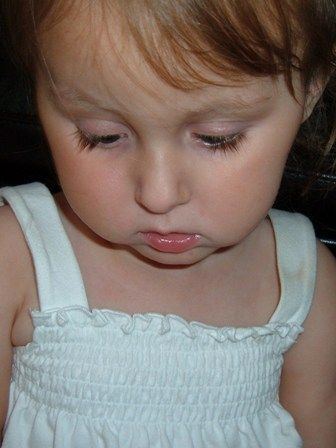
Bella was born on a very cold day in February. At the time I had two young children and had spent approximately 8 months dreaming of the three blissful days of breakfast/lunch/dinner in bed with my sweet newborn. Within the first 5 hours of her arrival that dream was shattered. Bella stopped breathing, turned blue, and was rushed to the Special Care Unit. So began our journey into the world of having "special needs".
Bella continued not to be able to coordinate breathing/sleeping or breathing/eating for the first six months of her life. During this time of alarms sounding to tell us that our baby was not breathing, we also learned about her genetic deletion, 22Q13.2. Oh, and just to top off our stress level, were told that she was blind. This time in my life was, blessfully, a blur. I remember feeling certain that at some point the alarm would stop sounding and someone with a stethascope wrapped around their neck would tell me, "Oops, our mistake, your beautiful baby is actually fine...so sorry for the worry.". I guess that was some sort of coping skill but I truely saw that entire scene play out in my mind a million times. No one ever said those words but indeed the alarm did stop sounding and as time went on, it became clear that Bella was not blind. 22Q13 deletion is a reality in our life but it is a reality that has become less and less difficult to cope with.
Bella is now 2 and 1/2 and every bit as beautiful as her name implies. She is an easy-going little love. Her smiles have become more and more frequent and her giggles are stronger every day. She absolutely adores her big sisters and will follow them all around the room with her eyes. She continues to struggle to sit up but when properly motivated (entertained like the princess she is), she can sit for close to 45 minutes. She has begun standing with support and taking steps with her PT. She works so hard and she rarely complains. Every little accomplishment floods our house with joy. Recently she began to hold her sippy cup by herself and her sisters celebrated like she had won the Boston Marathon!
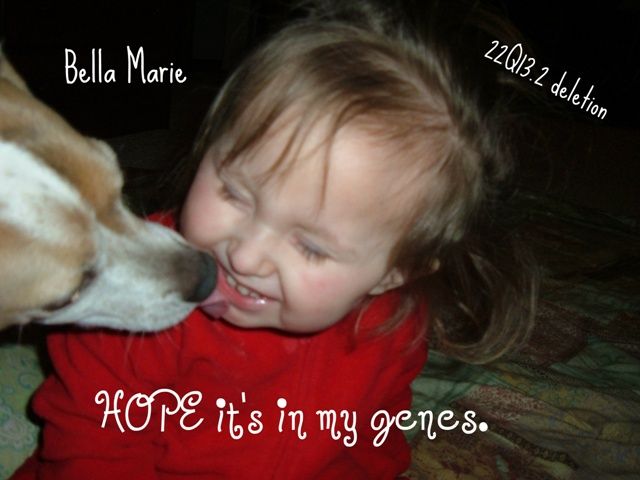
This story was told by Bella's mother, Crystal

Bella was born on a very cold day in February. At the time I had two young children and had spent approximately 8 months dreaming of the three blissful days of breakfast/lunch/dinner in bed with my sweet newborn. Within the first 5 hours of her arrival that dream was shattered. Bella stopped breathing, turned blue, and was rushed to the Special Care Unit. So began our journey into the world of having "special needs".
Bella continued not to be able to coordinate breathing/sleeping or breathing/eating for the first six months of her life. During this time of alarms sounding to tell us that our baby was not breathing, we also learned about her genetic deletion, 22Q13.2. Oh, and just to top off our stress level, were told that she was blind. This time in my life was, blessfully, a blur. I remember feeling certain that at some point the alarm would stop sounding and someone with a stethascope wrapped around their neck would tell me, "Oops, our mistake, your beautiful baby is actually fine...so sorry for the worry.". I guess that was some sort of coping skill but I truely saw that entire scene play out in my mind a million times. No one ever said those words but indeed the alarm did stop sounding and as time went on, it became clear that Bella was not blind. 22Q13 deletion is a reality in our life but it is a reality that has become less and less difficult to cope with.
Bella is now 2 and 1/2 and every bit as beautiful as her name implies. She is an easy-going little love. Her smiles have become more and more frequent and her giggles are stronger every day. She absolutely adores her big sisters and will follow them all around the room with her eyes. She continues to struggle to sit up but when properly motivated (entertained like the princess she is), she can sit for close to 45 minutes. She has begun standing with support and taking steps with her PT. She works so hard and she rarely complains. Every little accomplishment floods our house with joy. Recently she began to hold her sippy cup by herself and her sisters celebrated like she had won the Boston Marathon!

This story was told by Bella's mother, Crystal
Wednesday, October 10, 2012
Who is Phelan-McDermid Syndrome: ADYLIN
MEET ADYLIN

Adylin at the age of 4.
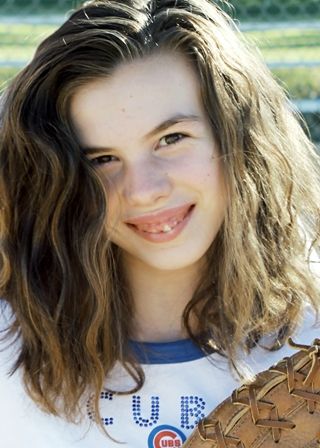
This story was told by Adylin's mother, Andria

Adylin at the age of 4.
After nine long, uneventful months, Adylin Eve was born on May 3, 2001 at 4:27pm., weighing seven pounds and nine ounces. Nineteen and a half inches long. She was the most beautiful thing I had ever seen!
She held her head up in the hospital and never stopped kicking! She rolled over, sat up and met every other milestone just when she should. Except walking. And while she babbled, she never seemed to get actual words. By fourteen months I was worried something might be wrong. I had her assessed by a group of professionals (OT, PT, speech therapist, child psychologist) through our public school system, who, along with our pediatrician, said she would catch up – it was a minor delay. They saw no reason for concern at this time. I took her home and continued to watch her grow, but still not walk or form words. At eighteen months, I was really getting concerned. We went back to the pediatrician, visited a developmental specialist at Children’s Hospital in Omaha , NE
Around the age of four, after attending ECSE (Early Childhood Special Education) at the school for about a year, teachers began asking if she had ever been evaluated for autism. After revisiting the developmental specialist in Omaha
Adylin is eleven now. In some ways she is a typical pre-teen and in other ways she is far behind other children her age. She does talk now. Some words are very clear, while others are “Adylin-speak” – approximations you come to know after spending some time with her. And, while I still break down every now and again, fearing she won’t have the life I always wanted for her, I’m learning from her the life that she wants. She is so happy and sweet and content. What more could I ask for my child?

This story was told by Adylin's mother, Andria
Tuesday, October 9, 2012
Shank3 - Making News
Below is an article recenlty publishedon safari.org. This article explains the importance of mice in Autism research. Shank3 (gene responsible for P-MS) is mentioned.
http://sfari.org/news-and-opinion/directors-columns/2012/pick-of-the-litter?utm_source=Master+List+-+Weekly+Newsletter&utm_campaign=a27c10c784-SFARI_Newsletter_120925&utm_medium=email
Thursday, September 27, 2012
P-MS Board of Directors to Hold a TELETHON!
The Phelan-McDermid Syndrome Foundation (PMSF) Board of Directors will hold a Fundraising Telethon and Regional Challenge event on Saturday, October 6th from 2 PM to 5 PM at the PMSF headquarters as part of their annual meeting.
The Phelan-McDermid Syndrome Foundation (PMSF) is a support group for those impacted by Phelan-McDermid Syndrome. The foundation represents 800 people with Shank3 deletions or mutations. Shank3 is a gene on the 22nd chromosome, which, when deleted or damaged, can cause autism. ...
The Phelan-McDermid Syndrome Foundation (PMSF) is a support group for those impacted by Phelan-McDermid Syndrome. The foundation represents 800 people with Shank3 deletions or mutations. Shank3 is a gene on the 22nd chromosome, which, when deleted or damaged, can cause autism. ...
One current focus of PMSF is utilizing a family registry detailing specific deletions and symptoms of those affected. This registry is a one of a kind database that can be used for research purposes. The foundation's genetic registry is providing researches with 'never-before-available' data and biosamples. The research focusing on the genetic causes of autism is resulting in life changing discoveries, many of which will eventually lead to better lives for millions of kids on the spectrum. The foundation’s research grants help fund some of the most brilliant minds working on the most advanced genetic research.
DONORS - HOW CAN YOU HELP?
- Make an online donation prior to October 6th at 5:00 p.m. (Eastern Time).
http://22q13.org/j15/
The link will take you to the pmsf.org website. Click DONATE. You will be directed to paypal to process your donation. Be sure to click ADD SPECIAL INSTRUCTIONS TO SELLER. Please type in the memo field "BOARD OF DIRECTORS TELETHON - REGION 2".
DONORS - HOW CAN YOU HELP?
- Make an online donation prior to October 6th at 5:00 p.m. (Eastern Time).
http://22q13.org/j15/
The link will take you to the pmsf.org website. Click DONATE. You will be directed to paypal to process your donation. Be sure to click ADD SPECIAL INSTRUCTIONS TO SELLER. Please type in the memo field "BOARD OF DIRECTORS TELETHON - REGION 2".
- Call the Board of Directors on Oct 6th from 2 p.m. to 5 p.m. (Eastern Time) at 941.485.8000 to process your donation. Be sure to indicate that you are supporting REGION 2!
to process your donation. Be sure to indicate that you are supporting REGION 2!
- E-mail Cheryl Herbold @ Cheryl@pmsf.org or Jack Sweeney @ Jack@pmsf.org to process your donation. Be sure to indicate that you are supporting REGION 2!
Please encourage your friends and family to participate. This fundraiser is a Regional Challenge. When you indicate you are supporting REGION 2, you are supporting PMSF families located in Iowa, Minnesota, Nebraska, North Dakota, South Dakota, & Wisconsin.
- E-mail Cheryl Herbold @ Cheryl@pmsf.org or Jack Sweeney @ Jack@pmsf.org to process your donation. Be sure to indicate that you are supporting REGION 2!
Please encourage your friends and family to participate. This fundraiser is a Regional Challenge. When you indicate you are supporting REGION 2, you are supporting PMSF families located in Iowa, Minnesota, Nebraska, North Dakota, South Dakota, & Wisconsin.
P-MS In The News: THE WALL STREET JOURNAL
The Wall Street Journal published an article titled Progree in Identifying the Genetic Root Cause of Autism.
Here is the paragraph that refers to Phelan-McDermid Syndrome!
"Identifying genetic causes can also help families find support groups, research programs and potential treatments tailored to their child's specific needs. For example, one of the abnormalities Mount Sinai tests for is the SHANK3 mutation on chromosome 22. It causes an autism-spectrum disorder and Phelan-McDermid Syndrome, in which communication between nerve cells is disrupted, impairing learning and memory. Researchers at Mount Sinai found that an insulin-like growth factor could reverse that disruption in mice and are now testing it in children aged 5 to 17 with SHANK3 mutations."
"Once you know the genetic cause of an intellectual disability and understand the effect on the brain," says Alex Kolevzon, clinical director of the Seaver Autism Center at Mount Sinai, "you can start to think about targeted treatments."
Read the entire article by clicking this link.
http://online.wsj.com/article/SB10000872396390444813104578016280501020620.html#articleTabs=article
Here is the paragraph that refers to Phelan-McDermid Syndrome!
"Identifying genetic causes can also help families find support groups, research programs and potential treatments tailored to their child's specific needs. For example, one of the abnormalities Mount Sinai tests for is the SHANK3 mutation on chromosome 22. It causes an autism-spectrum disorder and Phelan-McDermid Syndrome, in which communication between nerve cells is disrupted, impairing learning and memory. Researchers at Mount Sinai found that an insulin-like growth factor could reverse that disruption in mice and are now testing it in children aged 5 to 17 with SHANK3 mutations."
"Once you know the genetic cause of an intellectual disability and understand the effect on the brain," says Alex Kolevzon, clinical director of the Seaver Autism Center at Mount Sinai, "you can start to think about targeted treatments."
Read the entire article by clicking this link.
http://online.wsj.com/article/SB10000872396390444813104578016280501020620.html#articleTabs=article
Thursday, September 20, 2012
PROGRESS...Slowly But Surely!
I really never thought Ashlyn would be able to ride a bike. We have tried and tried and tried to get her to coordinate the pedaling movement to no avail. Today, I get an e-mail from school and it reads: "Please come to school a bit early if you can AND bring your camera. Ashlyn has something REALLY special to show you."
Of course I head up to school to see what's up. AND...this is what I see.
The school had brought in a stationary peddler for Ashlyn to practice the pedaling movement. It was obviously just enough to give her to boast to get the movement down. She still has a LONG way to go, but this is a start. She was running into walls and couldn't get turning around down. HOW EXCITING!
Of course I head up to school to see what's up. AND...this is what I see.
The school had brought in a stationary peddler for Ashlyn to practice the pedaling movement. It was obviously just enough to give her to boast to get the movement down. She still has a LONG way to go, but this is a start. She was running into walls and couldn't get turning around down. HOW EXCITING!
Tuesday, September 18, 2012
World Orphan Drug Congress - Raising Awareness
THANK YOU - Megan O'Boyle, Board Member of the Phelan-McDermid Syndrome Foundation, for presenting a patient testimony at World Orphan Drug Congress USA 2012. We're so proud you have chosen to be a voice for the P-MS family!
Wednesday, September 12, 2012
Annie's Golf Classic - PMSF Benefit
Annie's Golf Classic will be held on November 1st, 2012 in the Trophy Club, TX (Dallas area)!
The event is a benefit for Phelan-McDermid Syndrome Foundation.
CLICK HERE TO REGISTER!
The event is a benefit for Phelan-McDermid Syndrome Foundation.
CLICK HERE TO REGISTER!
Saturday, September 8, 2012
2012 Phelan-McDermind Syndrome Conference - Buidling Rays of Hope
The 2012 Phelan McDermid Syndrome Conference was held in Orlando, FL July 24th - 27th. What an amazing experience! This was our families first conference. IMMEDIATELY...I felt at home. I finally...finally found the family I've always needed. They all got it...they understood...they accepted us...UNCONDITIONALLY! It is so hard for me to put this experience into words. So...I'm going to share videos.
This is a video I created.
This is a video created by the Kuehl family.
This is a link to a powerpoint video a family posted showing their conference experience!'
CLICK HERE
What an AMAZING experience! Nearly one and a half months after the conference, I find myself LONGING to see these families once again.
Here is a link to all the videos posted during the PMSF conference.
CLICK HERE
This is a video I created.
This is a video created by the Kuehl family.
This is a link to a powerpoint video a family posted showing their conference experience!'
CLICK HERE
What an AMAZING experience! Nearly one and a half months after the conference, I find myself LONGING to see these families once again.
Here is a link to all the videos posted during the PMSF conference.
CLICK HERE
Monday, August 27, 2012
LOGAN'S HEROES - Raising Awareness!
This weekend, Logan's Heroes held a motor cycle ride fundraiser to support the Phelan McDermid Syndrome Foundation.
Below is an article about the fundraiser.
http://www.abc12.com/story/19377054/motorcycle-ride-raises-awareness-about-rare-disorder
Learn more about Logan's Heroes by checking out their webpage.
http://www.logans-heroes.org/
Below is an article about the fundraiser.
http://www.abc12.com/story/19377054/motorcycle-ride-raises-awareness-about-rare-disorder
Learn more about Logan's Heroes by checking out their webpage.
http://www.logans-heroes.org/
Wednesday, August 22, 2012
Who is Phelan-McDermid Syndrome: JAMIE
MEET JAMIE
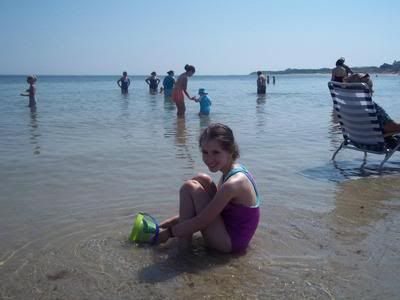
Jamie - Enjoying Her Time at the Beach
Jamie is our beautiful, funny, smart, shy and witty 10 year old daughter. She brings sunshine to our family. She was diagnosed with Phelan-McDermind Syndrome (P-MS) at age 3. At that time, there were approximately 75 known cases of PM-S. We had questions that couldn't be answered and problems that couldn't be shared. It was a very trying time for our family. Each day was (and still is) a challenge, but it's getting better. Yes...I'm still waiting for her to walk down the stairs by herself, brush her own teeth or to hear an unprompted "love you Mom". BUT...I wouldn't change a thing about this life with Jamie. One of her older sisters (she has 3) once said to me "it wouldn't be our family if Jamie was normal" So very true. Normal or not...she completes our family.
Jamie is in the 5th grade. She's in a special needs classroom with 3 other children. She receives Physical, Occupational, and Speech Therapy. She has an aide mainly for safety purposes. Jamie truly loves going to school. To this day, the school system has not let her down. They know what she needs. They listen to me and her IEP meetings are always a success. I am thankful for that. Her vocabulary consists of about 35 words and about 5 signs. She recently started wearing AFO's to help with her walking. Her orthopedist is concerned about the possibility of "genu recurvatum" in both legs. One major health concern with Jamie is chronic constipation. She's followed by a GI doctor at Children's Hospital in Boston. Her pediatrician has concerns about her weight. She is 4' 6" tall and only weighs 55 pounds. She's very tall and lanky. A gust of wind could knock her down. Other than that she has had no major health issues. She did suffer from croup quite a bit as an infant/toddler but seems to have grown out of it within the past few years. All EEG's, MRI's, kidney ultrasounds, etc have come back normal.
Jamie is a loner when it comes to play time but by no means is she lonely. While it bothers me that she has never been to a sleepover, or gone to a friends birthday party, or giggled on the phone with a classmate, I know she has no interest in these things. She just doesn't have the mental ability to grasp the meanings of all things a 10 year old should understand. She may not have any "human" friends (besides me, her dad, and 3 sisters) but she is lovingly surrounded by a group of fake dinosaurs. She plays for hours with these plastic friends of hers (just babbling away at them). I may not be able to understand what she says to her favorite T-Rex but she sure has a plan for him! Her other favorite activity is going to the beach. I wish we lived in a warm climate year round to accommodate this for her. We make the most of it during the summer months. Jamie loves to just sit at the waters edge and watch people, throw small rocks into the water, or try to jump small waves. I truly believe the ocean is her happy place.
Having a child with special needs has taught me a lot. It has given me so much strength and yet left me humbled by the sheer joy in Jamie's eyes over the simplest things. If you stop to think about it for a minute...doesn't every child have a special need? My Jamie just has EXTRA special needs....
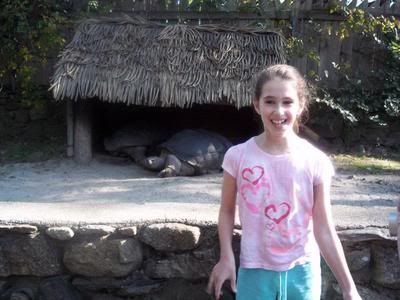
This story was told by Jamie's mom, Kelsey.

Jamie - Enjoying Her Time at the Beach
Jamie is our beautiful, funny, smart, shy and witty 10 year old daughter. She brings sunshine to our family. She was diagnosed with Phelan-McDermind Syndrome (P-MS) at age 3. At that time, there were approximately 75 known cases of PM-S. We had questions that couldn't be answered and problems that couldn't be shared. It was a very trying time for our family. Each day was (and still is) a challenge, but it's getting better. Yes...I'm still waiting for her to walk down the stairs by herself, brush her own teeth or to hear an unprompted "love you Mom". BUT...I wouldn't change a thing about this life with Jamie. One of her older sisters (she has 3) once said to me "it wouldn't be our family if Jamie was normal" So very true. Normal or not...she completes our family.
Jamie is in the 5th grade. She's in a special needs classroom with 3 other children. She receives Physical, Occupational, and Speech Therapy. She has an aide mainly for safety purposes. Jamie truly loves going to school. To this day, the school system has not let her down. They know what she needs. They listen to me and her IEP meetings are always a success. I am thankful for that. Her vocabulary consists of about 35 words and about 5 signs. She recently started wearing AFO's to help with her walking. Her orthopedist is concerned about the possibility of "genu recurvatum" in both legs. One major health concern with Jamie is chronic constipation. She's followed by a GI doctor at Children's Hospital in Boston. Her pediatrician has concerns about her weight. She is 4' 6" tall and only weighs 55 pounds. She's very tall and lanky. A gust of wind could knock her down. Other than that she has had no major health issues. She did suffer from croup quite a bit as an infant/toddler but seems to have grown out of it within the past few years. All EEG's, MRI's, kidney ultrasounds, etc have come back normal.
Jamie is a loner when it comes to play time but by no means is she lonely. While it bothers me that she has never been to a sleepover, or gone to a friends birthday party, or giggled on the phone with a classmate, I know she has no interest in these things. She just doesn't have the mental ability to grasp the meanings of all things a 10 year old should understand. She may not have any "human" friends (besides me, her dad, and 3 sisters) but she is lovingly surrounded by a group of fake dinosaurs. She plays for hours with these plastic friends of hers (just babbling away at them). I may not be able to understand what she says to her favorite T-Rex but she sure has a plan for him! Her other favorite activity is going to the beach. I wish we lived in a warm climate year round to accommodate this for her. We make the most of it during the summer months. Jamie loves to just sit at the waters edge and watch people, throw small rocks into the water, or try to jump small waves. I truly believe the ocean is her happy place.
Having a child with special needs has taught me a lot. It has given me so much strength and yet left me humbled by the sheer joy in Jamie's eyes over the simplest things. If you stop to think about it for a minute...doesn't every child have a special need? My Jamie just has EXTRA special needs....

This story was told by Jamie's mom, Kelsey.
Tuesday, August 14, 2012
Who is Phelan-McDermid Syndrome: OLIVIA
MEET OLIVIA
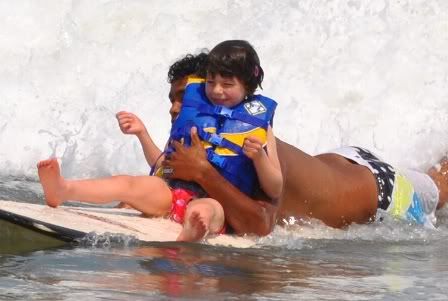
Oliva Participating in the Waves of Change Surfing Program
Olivia is a 6 year old fun, loving and happy little girl residing in central New Jersey with her mom Taryn, dad Brian, 19 month old brother James and family dog Annie. Prior to birth, Olivia was diagnosed with Ring 22 Chromosome Disorder. Three years later, the size of her chromosome deletion was detected and Olivia was diagnosed with Phelan-McDermid Syndrome and most recently Autism. Quite a diagnosis, right? Well, despite the many challenges Olivia is faced with, she is a very hard working and determined little girl.
Probably one of the most difficult challenges in raising Olivia is the fact that she is completely non-verbal – no words, no sound approximations, no forms of sign language, just a range of sounds including lots of giggles. Funny thing is that Olivia had 5 words at 12 months of age, lost them 3 months later and they have yet to return. Because of this impairment, Olivia uses a picture system to communicate and is currently learning augmentative applications for use with her iPad. An electronic voice is far better than no voice at all!
In addition to her language impairment, Olivia has a degree of cognitive impairment, poor fine motor skills, weakened hand strength, decreased motor coordination, sensory processing disorder, decreased ability to regulate body temperature, consistent teeth grinding, a strong desire to lick metal and increased irritable behaviors.
Since age 3, Olivia attends a special services full-day school program for 11 months throughout the year. In addition to her education (which includes Occupational Therapy, Speech Therapy and Physical Therapy), she also receives private Occupational Therapy and ABA therapy. Through a collaborative approach, Olivia utilizes a wide variety of fun activities to help develop better body awareness, core strength, fine motor skills as well as communication development.
Olivia is a sensory seeker and enjoys a wide variety of physical activities including jumping on her trampoline, swinging and running around on the playground. Her most favorite pastimes include: therapeutic horseback riding, swimming, surfing, bike riding, watching videos (her favorite is The Fresh Beat Band), eating and playing with her little brother.
Through perseverance, love, patience and strength, Olivia has far exceeded the expectations that were presented to her parents on November 23, 2005, the day that has changed the Stack Family’s life forever.
Sunday, August 12, 2012
Memory - A Building Block
Through the years, we've learned that we need to focus on what I like to call "Building Blocks". Ashlyn is very good at some things (Science) and not so good at other things (Math). Her favorite thing (BY FAR) is Reading. She is not a really good reader, but she loves to listen to books. We are fairly certain her memory skills came from her love of reading. We build on this as much as possible.
During 2nd grade, Ashlyn's class had Reader's Theater once a week. The children got up in front of class and read parts of a play. The parents were allowed to come and watch occasionally. Ashlyn loved Reader's Theater, but she could not read her parts. We didn't want her to not be able to participate...so we started teaching her to learn her parts by memory. It was a lot of work and repetition at school and at home, but she did it. She got up in front of class and did her parts each week FROM MEMORY while all the other kids got to read their parts.
Each week the children would discuss their Reader's Theater. The children always praised Ashlyn for memorizing her parts which is much harder than reading it like the other kids do!
Below is a video of a Reader's Theater. Ashlyn speaks at .09 seconds, 3.52, 4.40 and 6.01 minutes.
During 2nd grade, Ashlyn's class had Reader's Theater once a week. The children got up in front of class and read parts of a play. The parents were allowed to come and watch occasionally. Ashlyn loved Reader's Theater, but she could not read her parts. We didn't want her to not be able to participate...so we started teaching her to learn her parts by memory. It was a lot of work and repetition at school and at home, but she did it. She got up in front of class and did her parts each week FROM MEMORY while all the other kids got to read their parts.
Each week the children would discuss their Reader's Theater. The children always praised Ashlyn for memorizing her parts which is much harder than reading it like the other kids do!
Below is a video of a Reader's Theater. Ashlyn speaks at .09 seconds, 3.52, 4.40 and 6.01 minutes.
Thursday, August 9, 2012
Gene Therapy - How was Ashlyn Diagnosed with P-MS?
Ashlyn was diagnosed with 22q13.33 deletion syndrome when she was 7 1/2. This was not for lack of trying to figure out what was going on with her developmentally. Just before Ashlyn turned 3, she was tested for FragileX, RETT, Angelman's Syndrome, etc. She went through high resolution karyotyping and microarray tests. These tests ALL came back NORMAL.
We continued with therapy thinking that one day she would "catch up". I really dislike those words now! The older she got...the further and further she kept falling behind her peers. It was 1 yr...than 2 yrs...and now at 9 she's almost 3 years behind her peers educationally. At age 7, we decided to give genetic tests another try. From the time that she had her 1st test, medical advancements made it likely to pick up 1000 times more information. AND...it did pick up more information. She had a deletion of the 22nd chromosome. We were able to find this out through a custom microarray.
From what I understand, Ashlyn's deletion is VERY small...a terminal deletion of 22q13.33 (114kb) which includes part of Shank3. We assume 60-70% of Shank3 is missing. What does this mean..."a decrease in the functioning of synapses and cell-to-cell communication between neurons caused by a lack of SHANK3 protein is thought to contribute to the developmental delay, intellectual disability, and absent or severely delayed speech characteristic of people with 22q13.3 deletion syndrome".
What were the signs that something was not quite right?
Sitting up at 7 months.

The knee/butt scoot crawl...at a year old.

Walking at 17 months.

Drooling until age 4.
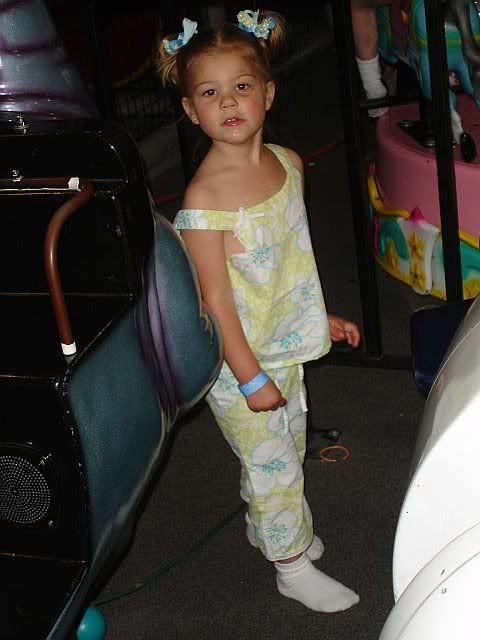
Constant...objects in mouth.
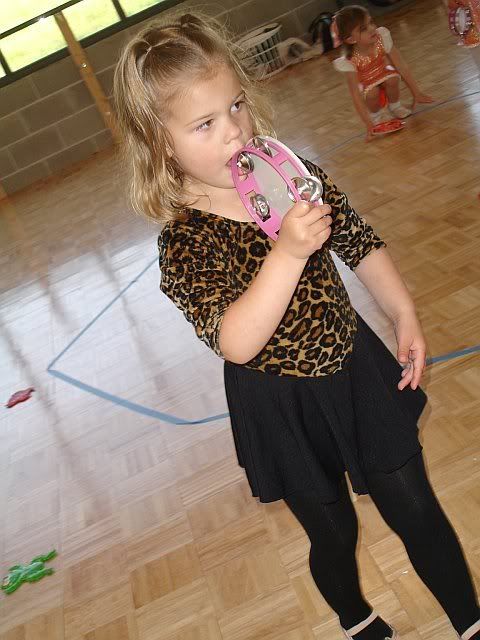
At 9 years old, Ashlyn is doing GREAT. She is talking in sentences which is something I've learned to which I should be more grateful!
Ashlyn's biggest battles...
We continued with therapy thinking that one day she would "catch up". I really dislike those words now! The older she got...the further and further she kept falling behind her peers. It was 1 yr...than 2 yrs...and now at 9 she's almost 3 years behind her peers educationally. At age 7, we decided to give genetic tests another try. From the time that she had her 1st test, medical advancements made it likely to pick up 1000 times more information. AND...it did pick up more information. She had a deletion of the 22nd chromosome. We were able to find this out through a custom microarray.
From what I understand, Ashlyn's deletion is VERY small...a terminal deletion of 22q13.33 (114kb) which includes part of Shank3. We assume 60-70% of Shank3 is missing. What does this mean..."a decrease in the functioning of synapses and cell-to-cell communication between neurons caused by a lack of SHANK3 protein is thought to contribute to the developmental delay, intellectual disability, and absent or severely delayed speech characteristic of people with 22q13.3 deletion syndrome".
What were the signs that something was not quite right?
- As a newborn, Ashlyn could not latch onto a bottle properly. She had a constant leakage from the side of her mouth. She seemed sort of lifeless at times. It was very hard to engage her.
- Ashlyn always seemed a bit unbalanced...unsteady.
- She would stuff her mouth full of food...did not chew properly.
- She never really crawled. She did a knee/butt scoot sort of crawl.
- She didn't walk until 17 months.
- She had lots of recurrent ear infections.
- She pointed, grunted, and cried from 1-3 yrs old.
- Ashlyn was EXTREMELY hyper active.
- She didn't talk until about age 3 1/2 and when she started talking it was very muffled with poor articulation.
- Once she did talk, we realize she had a learning disability.
- She had always had objects in her mouth...toys, clothes, fingers.
- She has incredibly THICK toe nails...especially the middle toe.
- She grinds her teeth.
- She did not sleep through the night until the age of 5.
- Behavior - has always been a bit on the difficult side.
- She drooled until the age of 4.
- She scrunches her finger tips to her palms.
Sitting up at 7 months.

The knee/butt scoot crawl...at a year old.

Walking at 17 months.

Drooling until age 4.

Constant...objects in mouth.

At 9 years old, Ashlyn is doing GREAT. She is talking in sentences which is something I've learned to which I should be more grateful!
Ashlyn's biggest battles...
- Socially - she does good, but she had a hard time communicating her wants to other kids.
- Educationally - she has a severe learning disability. She is more on a Kindergarten to 1st grade level. She knows her ABCs and their sounds and can write all her letters. She can not write any words...although she almost has her name down. She has all the letters, but she always spells it wrong. Math skills are non-existent. Reading is extremely difficult.
- Motor skills - are behind. She really wishes she could ride a bike. She has motor difficulties with all parts of her body. Her OT says she has the strength and coordination of a 5 year old.
- Coordination - boy...is she clumsy. She has an unusual walk and is unsteady. She bumps into things and trips regularly. She wore braces at night because she was a toe walker and needed to keep her tendons loose. She finally grew out of toe walking at the age of 8 and got to throw away her braces!
Phelan McDermid Syndrome - In The News, Research
Click on the hyper-links below to read articles about Phelan McDermid Syndrome & Shank3...In The News & Research.
Root Strategy
Meeting Brings Unusual Focus to Phelan McDermid Syndrome
22q13.3 Deletion Syndrome
First-Ever Phelan-McDermid Meeting Has Its Eureka Moments
In Phelan-McDermid, Motor Neurons Show Irregularities
Scientists Track Adult Regression in Autism-Related Syndrome
Geraldine Bliss: The P-MS Foundation - Autism Speaks
Fundatmentals of Genetic Testing - Part II
Lucca: 1 in 600 with P-MS
Theodore Toddler has Phelan McDermid Syndrome
Tenafly Teen Part of Autism Clinical Trial
NJ Dad & Daughter Hit the Road
Shank3 Gene Leads to Deficits in Synaptic Function
Shank3 Associated with Autism
Autism Recreated in Mice
Dr. Richardo Dolmetsch and his research with the Stanford Shank3 Study
Root Strategy
Meeting Brings Unusual Focus to Phelan McDermid Syndrome
22q13.3 Deletion Syndrome
First-Ever Phelan-McDermid Meeting Has Its Eureka Moments
In Phelan-McDermid, Motor Neurons Show Irregularities
Scientists Track Adult Regression in Autism-Related Syndrome
Geraldine Bliss: The P-MS Foundation - Autism Speaks
Fundatmentals of Genetic Testing - Part II
Lucca: 1 in 600 with P-MS
Theodore Toddler has Phelan McDermid Syndrome
Tenafly Teen Part of Autism Clinical Trial
NJ Dad & Daughter Hit the Road
Shank3 Gene Leads to Deficits in Synaptic Function
Shank3 Associated with Autism
Autism Recreated in Mice
Dr. Richardo Dolmetsch and his research with the Stanford Shank3 Study
Tuesday, August 7, 2012
READING...A Year Makes a Difference!
One of the hardest things for me to watch is Ashlyn struggle with Reading. She LOVES books and story time and bedtime books...and everything books. Reading them on her own is a different story. (She used to love tearing them and eating them...but thankfully we've moved past this stage.) If my husband and I did anything right with our kids, it was that we instilled a love of reading. My son took to reading books naturally. We didn't even have to teach him.
Ashlyn started to pick up reading some words at the age of 7. Just a few words here and there. By 7 and a half, she was starting to read very basic Pre-K levels books.
Looking back...It's amazing the difference a year has made. Her progress is incredibly slow, but it is progress. RIGHT! I believe a big part of this progress was a change in schools. Ashlyn started a new school in 2nd grade. The new school has a huge focus in reading. She reads with a reading specialist or a para EVERYDAY on top of the reading we do at home. She did not get this extra attention at her old school. I truly believe this has helped get her to a stage where she can actually read some words on her own.
This is Ashlyn reading at age 7.
This is Ashlyn reading at 7 and a half.
This is Ashlyn reading at 8 and a half.
Ashlyn started to pick up reading some words at the age of 7. Just a few words here and there. By 7 and a half, she was starting to read very basic Pre-K levels books.
Looking back...It's amazing the difference a year has made. Her progress is incredibly slow, but it is progress. RIGHT! I believe a big part of this progress was a change in schools. Ashlyn started a new school in 2nd grade. The new school has a huge focus in reading. She reads with a reading specialist or a para EVERYDAY on top of the reading we do at home. She did not get this extra attention at her old school. I truly believe this has helped get her to a stage where she can actually read some words on her own.
This is Ashlyn reading at age 7.
This is Ashlyn reading at 7 and a half.
This is Ashlyn reading at 8 and a half.
Monday, August 6, 2012
My Favorite App - Spellosaur
I wanted to share more detail on Ashlyn's difficulty with putting vocabulary to paper.

The process of working on the spelling test and IPAD app with only these 10 words took over 20 minutes. I compressed the video to show you brief sections of each category of the Spellosaur App. The app works on spelling words in 4 ways: Choose the words from a list, Fill in the missing letters, Unscramble the words, and Spell the words.
It amazes me everyday that Ashlyn can actually recognize and spell these words. Someday we will figure out how to get the words to paper! This app is a big reason why we have pushed for keyboard and computer time at school with Ashlyn.
I think once you see the video the NEED for visual input will make a lot more sense.
Last January, I was struggling with the fact that Ashlyn could spell some words verbally but she could not put the same words to paper and spell them. We had just gotten an IPAD and were trying out some apps with her. I came across an app called Spellosaur. This app really changed my world and the way I look at how Ashlyn learns. It made me understand the absolute NEED that she has for visual input.
I am going to show you a video of Ashlyn doing a verbal spelling test to paper and then the difference of using the IPAD app for the same list of words.
Below is a picture of the spelling test that you will see Ashlyn worked on in the video.

The process of working on the spelling test and IPAD app with only these 10 words took over 20 minutes. I compressed the video to show you brief sections of each category of the Spellosaur App. The app works on spelling words in 4 ways: Choose the words from a list, Fill in the missing letters, Unscramble the words, and Spell the words.
It amazes me everyday that Ashlyn can actually recognize and spell these words. Someday we will figure out how to get the words to paper! This app is a big reason why we have pushed for keyboard and computer time at school with Ashlyn.
I think once you see the video the NEED for visual input will make a lot more sense.
Handwriting
Handwriting has been a hard task for Ashlyn to manage. At 9 years old, she knows all her letters and can verbally spell Kindergarten to 1st grade level words (she'll be going into 4th grade in a couple weeks). Getting these words to paper has been a difficult task.
In Kindergarten, everything Ashlyn wrote had to be a highlighted sample. Either that...or it was scribbles.

She was still using highlighted samples in 1st grade, but we did try to introduce writing samples.


Same thing for 2nd grade...not much progress!


In 3rd grade, same thing but writing is getting a little more clear and less labored.

This is one of my favorite pieces of artwork from Ashlyn in 3rd grade.

In Kindergarten, everything Ashlyn wrote had to be a highlighted sample. Either that...or it was scribbles.

She was still using highlighted samples in 1st grade, but we did try to introduce writing samples.


Same thing for 2nd grade...not much progress!


In 3rd grade, same thing but writing is getting a little more clear and less labored.

This is one of my favorite pieces of artwork from Ashlyn in 3rd grade.

Developmental Milestones - Preschool/Kindergarten
The preschool years were very frustrating for us. It seemed like all those developmental milestones your child should reach...were always delayed for Ashlyn. Ashlyn clearly had some problems developing and processing language, following simple directions, playing games, and managing her motor coordination. Things like riding a trike, drawing, or building block towers were so difficult. (In fact at 9 years old, she still can't do the pedal motion to ride a bike or trike.)
Motor Coordination
During the preschool years, Ashlyn walked on her tip toes about 80-90% of the time. She preferred to spin in circles (forever). She was very clumsy. She would run into walls, chairs, and furniture and frequently tripped and fell over objects on the floor. Scribbling was her main art form. By Kindergarten, she was not able to write her name or any other letter of the alphabet.
Games
Ashlyn was not able to play simple games like Shoots and Ladders or Candyland. She could not process or understand the rules. She always turned the game into her own form of the game which was never the "correct" way to play by the rules.
Potty Training
One of our most frustrating battles with Ashlyn was toilet training. By Kindergarten, she wasn't even close to being potty trained. She finally mastered the skill right before she entered 2nd grade. She still has occasional accidents, but very few and far between. One thing that we have a hard time understanding was how she could stay dry all night long but she would have many accidents during the day.
Sleep
What's sleep? Ashlyn did not sleep through the night until she turned 5 years old. Most nights, she was up 2-4 times wanting attention. Almost every night, she woke up screaming.
Language
Oral motor tasks were so difficult for Ashlyn. This was a big part of her therapy during the preschool years. It took us a while to figure out she was talking...we just couldn't understand her. By age 3, she was very good at prompted speech. It was very hard for her to develop any language on her own. She had to be prompted to say everything and anything. She would repeat everything she just couldn't initiate the speech on her own. By age 4, she was talking with lots of articulation & grammatical errors. By age 5, she was speaking in sentences but most people could not understand her. Age 5 was a big growth year for speech. I remember when she entered Kindergarten they noted that her speech was 20% understandable. At the end of Kindergarten, it was 80% understandable. This was HUGE! People could FINALLY understand her and communicate with her.
School & Therapy
During Preschool years, Ashlyn attended an Early Childhood Special Ed (ECSE) classroom half the day and attended our church preschool the other half the day. She had Speech Therapy (ST) 2 times a week along with therapy in her ECSE classroom. She had Occupational and Physical Therapy (OT & PT) private sessions once a week along with some therapy in her ECSE classroom. We choose to mainstream Ashlyn into a normal Kindergarten classroom. This was a difficult move for us as she did not receive nearly enough therapy or one on one interaction. The staff at the school really had no idea how to get her to learn...or what to do with her! Funny thing...this was also the time we saw the most progress with Ashlyn.
Videos!
This video is LONG...sorry. It was when Ashlyn was 4 years old.
Ashlyn at 4 years old singing Happy Birthday to her Uncle Curt.
This is what happened when Ashlyn had a nap (which never happened). This was towards the end of her Kindergarten year.
Ashlyn at 5 years old.
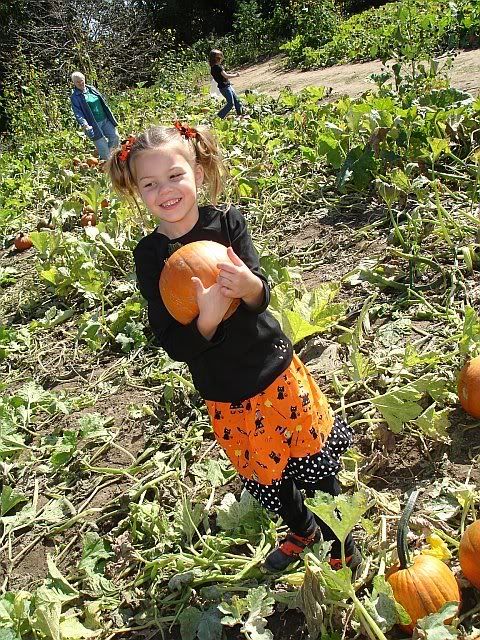
Motor Coordination
During the preschool years, Ashlyn walked on her tip toes about 80-90% of the time. She preferred to spin in circles (forever). She was very clumsy. She would run into walls, chairs, and furniture and frequently tripped and fell over objects on the floor. Scribbling was her main art form. By Kindergarten, she was not able to write her name or any other letter of the alphabet.
Games
Ashlyn was not able to play simple games like Shoots and Ladders or Candyland. She could not process or understand the rules. She always turned the game into her own form of the game which was never the "correct" way to play by the rules.
Potty Training
One of our most frustrating battles with Ashlyn was toilet training. By Kindergarten, she wasn't even close to being potty trained. She finally mastered the skill right before she entered 2nd grade. She still has occasional accidents, but very few and far between. One thing that we have a hard time understanding was how she could stay dry all night long but she would have many accidents during the day.
Sleep
What's sleep? Ashlyn did not sleep through the night until she turned 5 years old. Most nights, she was up 2-4 times wanting attention. Almost every night, she woke up screaming.
Language
Oral motor tasks were so difficult for Ashlyn. This was a big part of her therapy during the preschool years. It took us a while to figure out she was talking...we just couldn't understand her. By age 3, she was very good at prompted speech. It was very hard for her to develop any language on her own. She had to be prompted to say everything and anything. She would repeat everything she just couldn't initiate the speech on her own. By age 4, she was talking with lots of articulation & grammatical errors. By age 5, she was speaking in sentences but most people could not understand her. Age 5 was a big growth year for speech. I remember when she entered Kindergarten they noted that her speech was 20% understandable. At the end of Kindergarten, it was 80% understandable. This was HUGE! People could FINALLY understand her and communicate with her.
School & Therapy
During Preschool years, Ashlyn attended an Early Childhood Special Ed (ECSE) classroom half the day and attended our church preschool the other half the day. She had Speech Therapy (ST) 2 times a week along with therapy in her ECSE classroom. She had Occupational and Physical Therapy (OT & PT) private sessions once a week along with some therapy in her ECSE classroom. We choose to mainstream Ashlyn into a normal Kindergarten classroom. This was a difficult move for us as she did not receive nearly enough therapy or one on one interaction. The staff at the school really had no idea how to get her to learn...or what to do with her! Funny thing...this was also the time we saw the most progress with Ashlyn.
Videos!
This video is LONG...sorry. It was when Ashlyn was 4 years old.
Ashlyn at 4 years old singing Happy Birthday to her Uncle Curt.
This is what happened when Ashlyn had a nap (which never happened). This was towards the end of her Kindergarten year.
Ashlyn at 5 years old.

Sunday, August 5, 2012
The Year of the EAR
Our 2nd year with Ashlyn was much worse than the 1st year! We started to have many more concerns...to say the least. Our biggest concern by far was EARS. She always had an ear infection. We had about 7 ear infections...one right after the other...which lead to tubes. Tubes ended up being quite a nightmare for us. Ashlyn was one of about 5% of people that reject tubes and develop fungal infections. I thought getting rid of an ear infection was hard. It was nothing like getting rid of a fungal infection in the ear. This lead to an ear drum rupture. We were taking Ashlyn into the ENT every couple days to suction wax/fluid out of her ears. She was so miserable.
Ashlyn had about 10 words by the age of 15 months. She kept these words and developed more words, but it was very hard to understand her. Our thoughts at the time were that it was hard for her to develop language because of the ear infections. She always had fluid in her ears. Tympanagrams were never clear. This began our future of THERAPY, THERAPY, and more THERAPY. She started Speech and Occupational Therapy by the age of 2. We had such a hard time with communication at this age. It was so hard to understand Ashlyn and figure out exactly what she wanted or needed. She pointed, grunted, and CRIED!
Ashlyn started walking at 17 months. We were so happy. She was FINALLY walking...ON HER TIP TOES. We could never figure this out. How was it easier to walk on your tip toes than flat footed? That's just how she did it (until she was about 8 years old).
Ashlyn chewed on everything. She always had something plastic in her mouth. She also rolled objects in her hands all the time. She would find a tiny rock on the ground and roll it in her fingers or hands. She was also EXTREMELY hyper active. She could never sit still and do anything constructive. Go Go Go!
She perfected "W" sitting during this time.
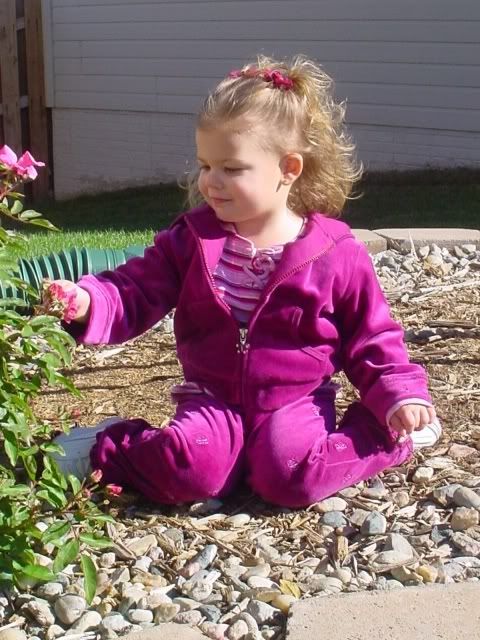
Ashlyn had about 10 words by the age of 15 months. She kept these words and developed more words, but it was very hard to understand her. Our thoughts at the time were that it was hard for her to develop language because of the ear infections. She always had fluid in her ears. Tympanagrams were never clear. This began our future of THERAPY, THERAPY, and more THERAPY. She started Speech and Occupational Therapy by the age of 2. We had such a hard time with communication at this age. It was so hard to understand Ashlyn and figure out exactly what she wanted or needed. She pointed, grunted, and CRIED!
Ashlyn started walking at 17 months. We were so happy. She was FINALLY walking...ON HER TIP TOES. We could never figure this out. How was it easier to walk on your tip toes than flat footed? That's just how she did it (until she was about 8 years old).
Ashlyn chewed on everything. She always had something plastic in her mouth. She also rolled objects in her hands all the time. She would find a tiny rock on the ground and roll it in her fingers or hands. She was also EXTREMELY hyper active. She could never sit still and do anything constructive. Go Go Go!
She perfected "W" sitting during this time.

Saturday, August 4, 2012
The FIRST Year
Ashlyn's first year was not really a year of concern. She seemed a little slow to develop skills, but nothing that was really bothersome. We were always told, "She'll catch up!" She didn't really sit up well. She would always bare her weight on her arms while sitting. She never did crawl correctly. She did a butt-scoot sort of crawl with one knee on the group and her foot helping her along her path.
She was NOT walking by a year old. She did a little babbling and she cried all the time. BOY DID SHE DROOL. She was a professional drooler. Everything was always soaked.
The one thing that ALWAYS bothered me was her feeding. She never learned how to latch onto a bottle correctly. She had a constant leakage out the side of her mouth. She always had a cloth around her neck to catch what she couldn't suck down. She never did hold her own bottle. We could not get her to breast feed and had to try many bottle nipples to find out which one "sort-of" worked. She did eat baby food really well...but it was always a mess. You may as well have just stripped her naked if you were going to feed her.
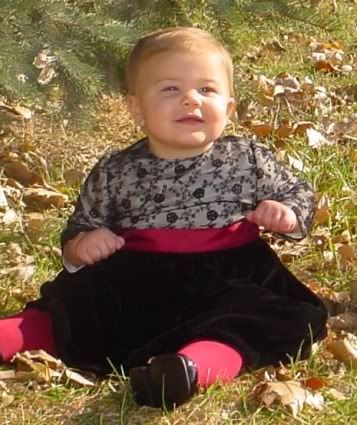
She was NOT walking by a year old. She did a little babbling and she cried all the time. BOY DID SHE DROOL. She was a professional drooler. Everything was always soaked.
The one thing that ALWAYS bothered me was her feeding. She never learned how to latch onto a bottle correctly. She had a constant leakage out the side of her mouth. She always had a cloth around her neck to catch what she couldn't suck down. She never did hold her own bottle. We could not get her to breast feed and had to try many bottle nipples to find out which one "sort-of" worked. She did eat baby food really well...but it was always a mess. You may as well have just stripped her naked if you were going to feed her.

Welcome To The World
Ashlyn was born in January of 2003.
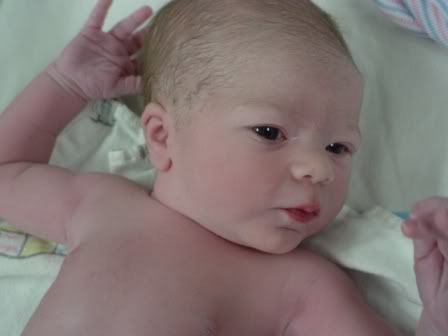
Her birth was pretty uneventful other than needing a brief 1-2 minutes of oxygen. We did have a difficult time getting her to eat, but we figured that was due to the fact that she never wanted to wake up. She slept 18 hours straight after birth. I was a little worried, but no one else seemed concerned.
On the 2nd day, I asked for a lactation consultant. I could not get Ashlyn to feed by breast or by bottle. They decided to start a tube drip to help her get some liquids. This sort of bothered me, but once again...NO ONE ELSE SEEMED REAL CONCERNED.
We were sent home from the hospital. No worries...with a perfect baby girl.
Wasn't she such a CUTE BABY?
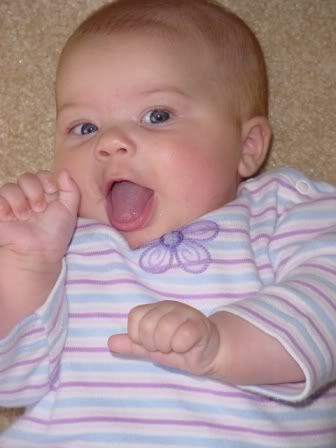

Her birth was pretty uneventful other than needing a brief 1-2 minutes of oxygen. We did have a difficult time getting her to eat, but we figured that was due to the fact that she never wanted to wake up. She slept 18 hours straight after birth. I was a little worried, but no one else seemed concerned.
On the 2nd day, I asked for a lactation consultant. I could not get Ashlyn to feed by breast or by bottle. They decided to start a tube drip to help her get some liquids. This sort of bothered me, but once again...NO ONE ELSE SEEMED REAL CONCERNED.
We were sent home from the hospital. No worries...with a perfect baby girl.
Wasn't she such a CUTE BABY?

Friday, August 3, 2012
PMS - It's Not What You Think
I used to think of PMS as a "powerful spell that women were put under once every month".
NOT ANYMORE!
NOT ANYMORE!
PMS now means Phelan-McDermind Syndrome. There are approximately 800 cases worldwide. It is probably widely under diagnosed. Ashlyn is a prime example of why. When she was 2, we had run genetic tests. The tests did not pick up her deletion. 5 years larger, the same (more advanced) test was able to pick up her deletion.
What is PMS...you ask? (I had to ask the same thing over and over.) My first encounter with the term was with Ashlyn's genetic doctor. He gave me a piece of paper (similar to what I could have found on the web) and said something to the sort of "We knew if we figured it out. It would be rare. It is rare. In fact, I have never heard of it.". As a parent, how do you react to that statement? Essentially, he did not have ANY resources for us. No information whatsoever. NONE!
Phelan-McDermid Syndrome (PMS) is a very rare deletion of the 22nd Chromosome. 22q13 to be more exact. Ashlyn has a terminal deletion at the very tip of the 22nd Chromosome. 22q13.33 to be more exact. Deletion size is highly variable...the larger deletions have more dysmorphic features than smaller deletions. Ashlyn has a VERY small microdeletion (114kb).
The Shank3 gene is at the end of the 22nd Chromosome. The gene codes for a structural protein that is important in the formation of synapses or connections between the nerve cells. These synapses allow impulses to travel from one nerve cell to another. Ashlyn's deletion is a little more rare than most in that she is only missing a part of Shank3. We assume about 70% of the gene is missing.
What are the "core features"?
Intellectual disability of varying degrees.
Delayed or Absent Speech.
Symptoms or Autism or Autism Spectrum Disorder.
Intellectual disability of varying degrees.
Delayed or Absent Speech.
Symptoms or Autism or Autism Spectrum Disorder.
What is in store for Ashlyn's future? We really don't have any idea. My goal is to cherish today and HOPE for the best future possible. Some of the research suggests that as people age there is quite a bit of regression. We really have no idea if this will be the case for Ashlyn as all the cases seem to be so variable.
Blame It On The Genes
This day and age there seems to be a "genetic" cause for everything...Dieting, Drinking, Marital Stability, Sleep Habits, Behavior, Etc. Every other article I read has some sort of scientific advice on how genes affect our lives. Is it really genetic? Or, is it just mind over matter? I was never very good at science, biology, or chemistry. Nor did I want to be good at those things. NOW...I want to know EVERYTHING I can about science and genetics!
For the first few years of my daughter's life, I kept looking for reasons and explanations as to why she was progressing so slow developmentally. Why was it so hard for her to talk? Why did she walk on her tip toes ALL THE TIME? Why did she always cry? Why was it so hard to potty train her? Why wouldn't she sleep through the night? WHAT WAS I DOING WRONG? I had to be doing something wrong!
It sort of became an obsession. Everyone told me she would "catch up". That's a phrase I never want to hear AGAIN...EVER! THERAPY THERAPY and more THERAPY. She still wasn't catching up. She kept falling further and further behind her peers. Test after test after test...what was up with my child?
After years of looking for explanations, we finally got an answer. A genetic deletion of the 22nd Chromosome. 22q13.33 Deletion or better known as Phelan McDermid Syndrome (PMS...It's not what you think!)
That answer we would later find out was a pretty rare answer to get. Not only did we not know what it was...neither did ANYONE else (including our doctors and therapists). From that point on I decided at the very least I could...BLAME IT ON THE GENES!
MEET ASHLYN

For the first few years of my daughter's life, I kept looking for reasons and explanations as to why she was progressing so slow developmentally. Why was it so hard for her to talk? Why did she walk on her tip toes ALL THE TIME? Why did she always cry? Why was it so hard to potty train her? Why wouldn't she sleep through the night? WHAT WAS I DOING WRONG? I had to be doing something wrong!
It sort of became an obsession. Everyone told me she would "catch up". That's a phrase I never want to hear AGAIN...EVER! THERAPY THERAPY and more THERAPY. She still wasn't catching up. She kept falling further and further behind her peers. Test after test after test...what was up with my child?
After years of looking for explanations, we finally got an answer. A genetic deletion of the 22nd Chromosome. 22q13.33 Deletion or better known as Phelan McDermid Syndrome (PMS...It's not what you think!)
That answer we would later find out was a pretty rare answer to get. Not only did we not know what it was...neither did ANYONE else (including our doctors and therapists). From that point on I decided at the very least I could...BLAME IT ON THE GENES!
MEET ASHLYN

Subscribe to:
Posts (Atom)
